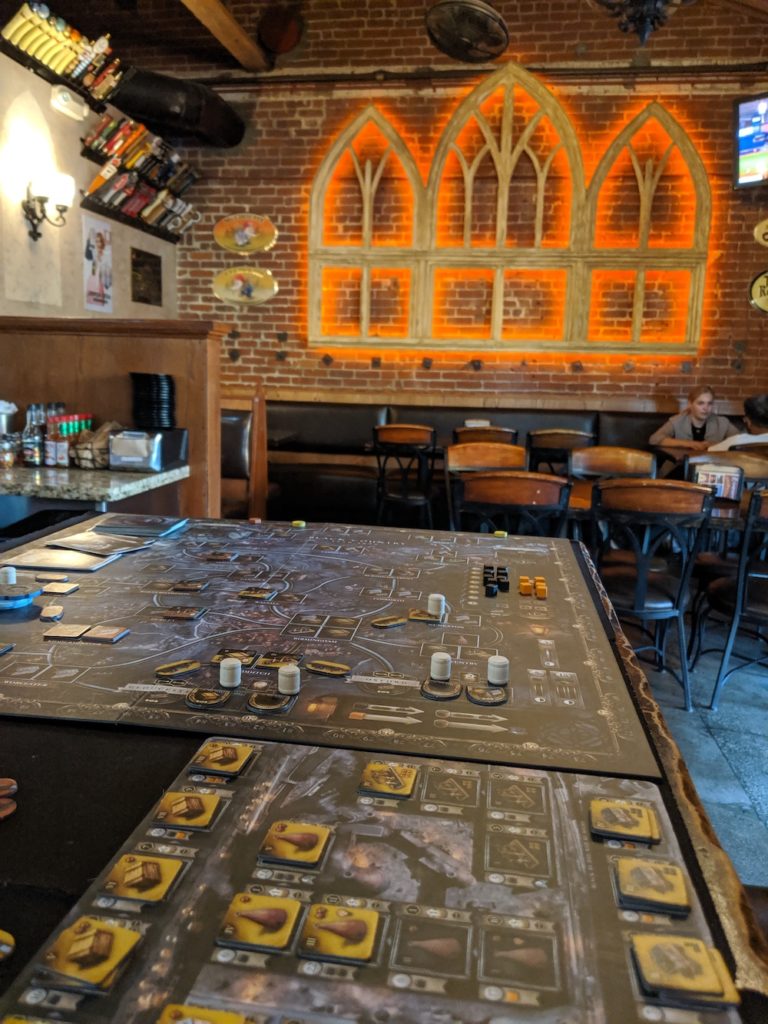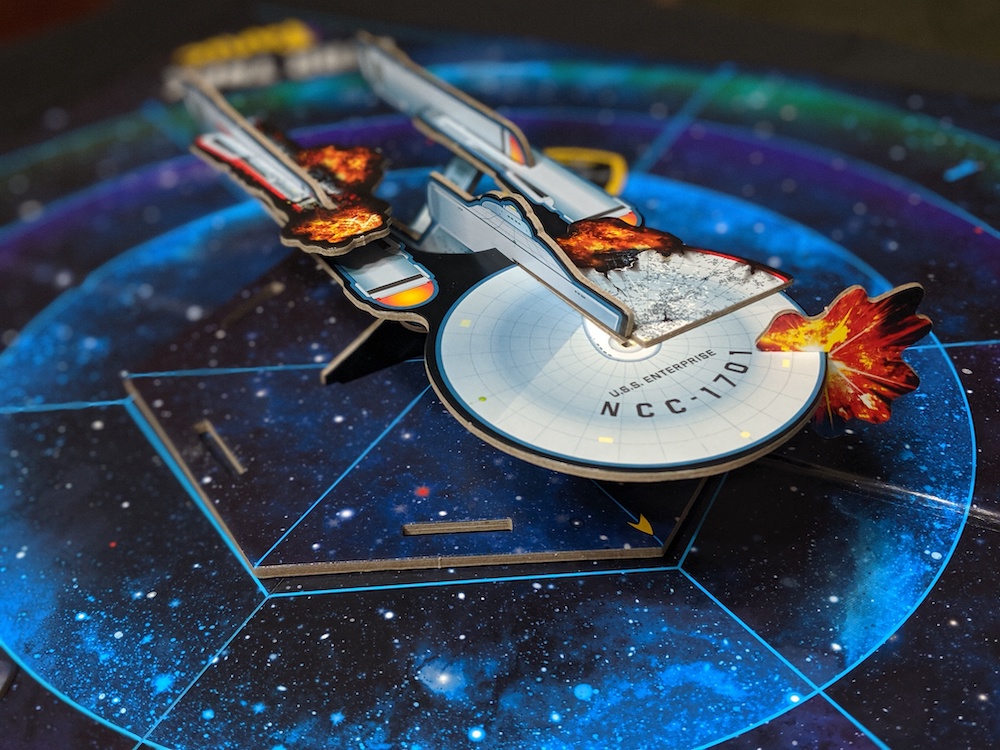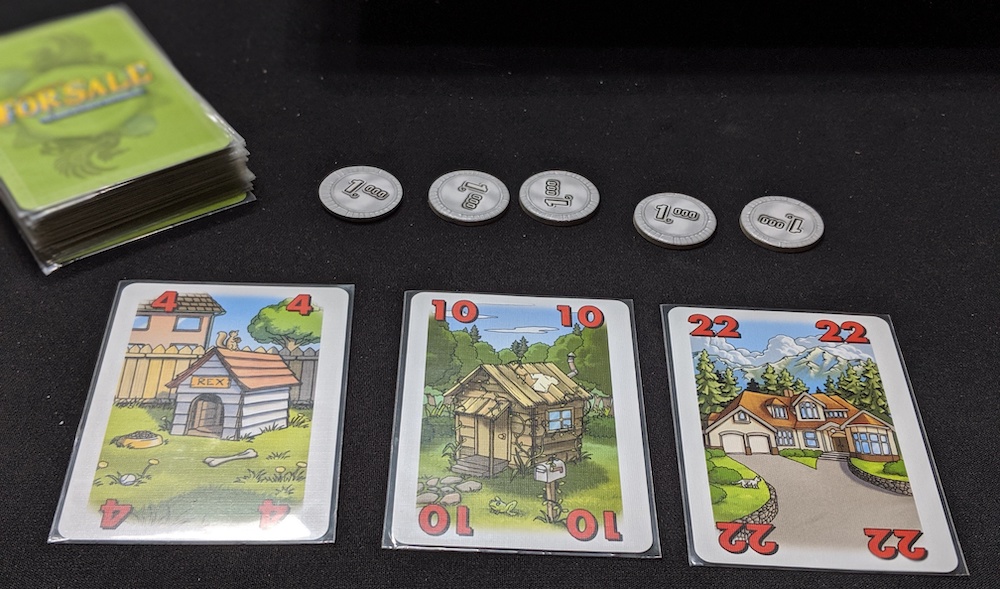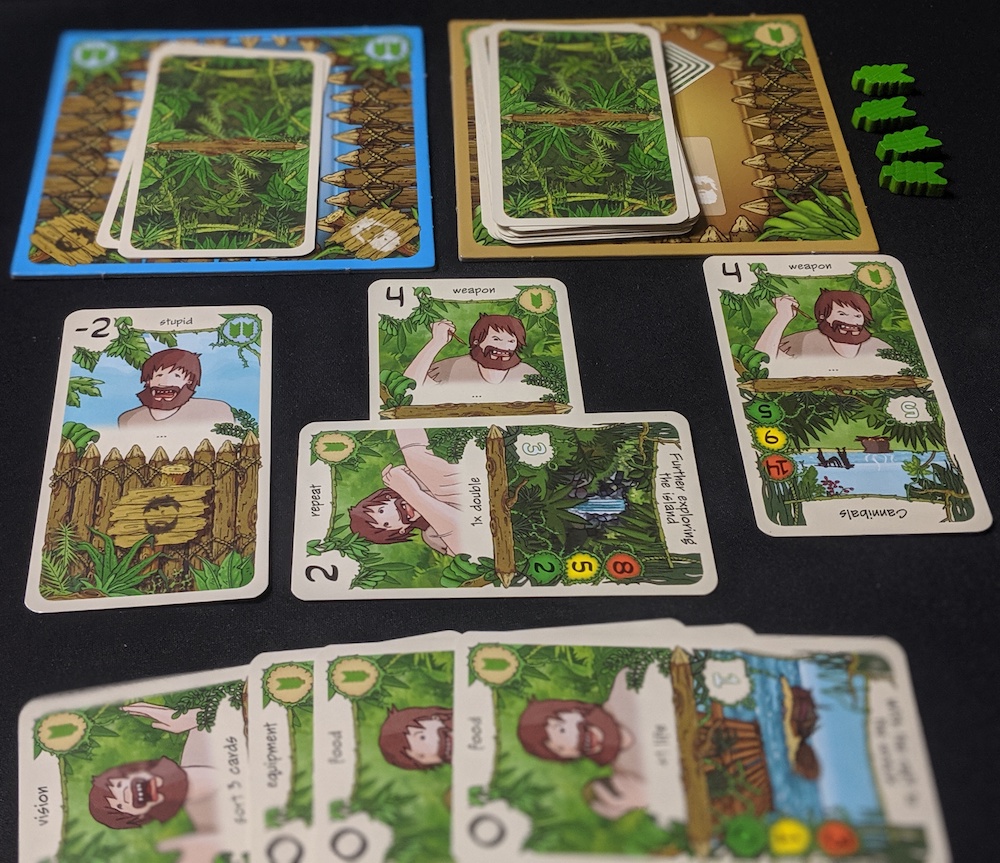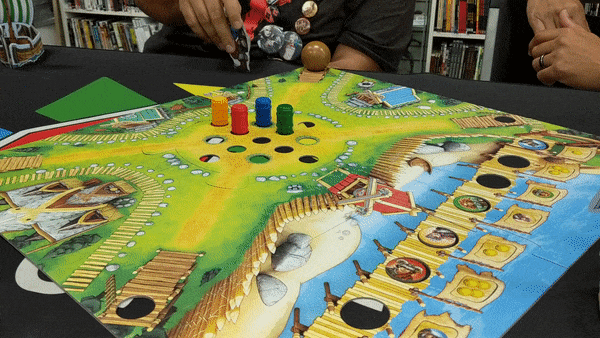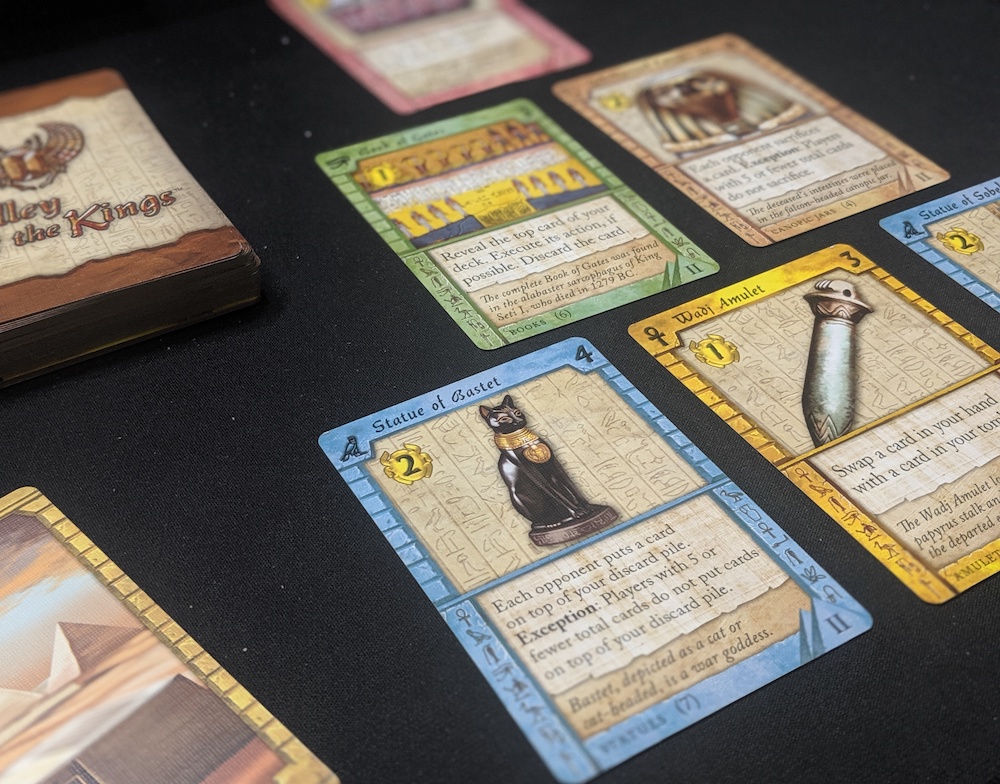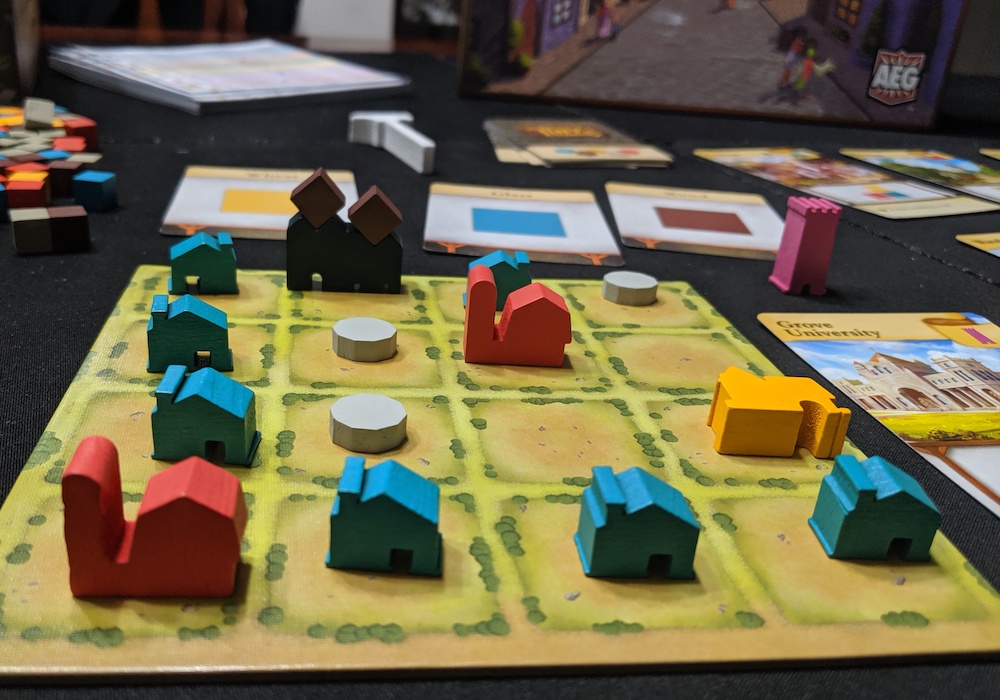I’m posting about a game every day in September! Here’s a link to yesterday’s post.
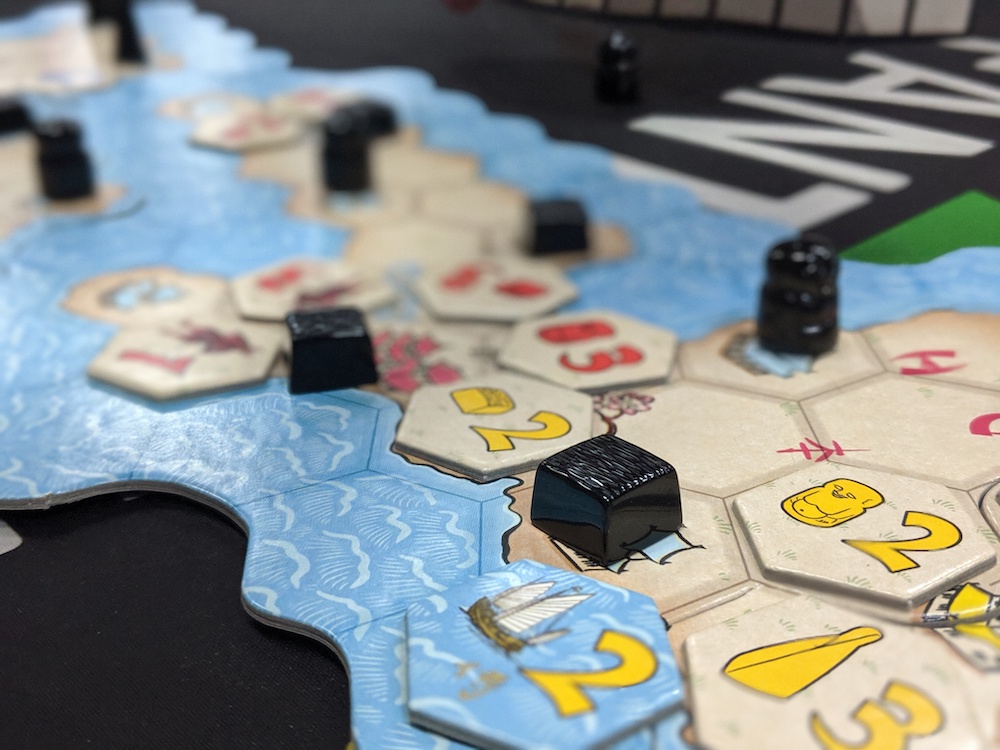
There are two things I’ve always loved about my main gaming group: 1. Everyone’s willing to play almost any kind of game, from the current hotness to obscure or classic titles. 2. There’s an unspoken rule that we try to play a game from each person who shows up.
Tonight was a perfect example. First, Daryl played his Lost Cities with Jin while I ate my super-late lunch. Next, we played Patrick’s Black Angel, which a bunch of us have been hyped to play. Then, we played my Jetpack Joyride, which I’ll be reviewing soon (spoiler alert: it’s a lot of fun), and Oscar’s Cartographers: A Roll Player Tale. Finally, we finished with Jin’s copy of Samurai, which seemed fitting to end game night with another Reiner Knizia game (Lost Cities being another one of his classics).
Samurai was one of the first games I played at this meetup four years ago when I was just getting into the hobby and even then it was an older game. Tonight proved to me that it remains one of my favorite Knizia titles.
At its heart Samurai is an abstract game in whichyou attempt to conquer ancient Japan using three factions; warriors, peasants, and priests are represented on the board by minis of helmets, rice, and Buddhas. It’s an area control game and the board is made up of hexagons that you place one of your faction tiles on; most tiles are numbered 1-4. It’s also a set collection game since you’re trying to own the majority of the three factions to win.
Like many of Knizia’s other games, Samurai has a relatively simple ruleset with a surprising amount of depth to it. You’re just choosing one of your five random tiles to place on board and when you surround a mini, you and any opponents add the strength value of your factions and the highest takes the mini.
The game ends when all of one mini (helmet, rice, or Buddha) is depleted. The player with the most majorities wins the game, with ties being decided by the number of minis you’ve collected.
I love how this area control game works because you can basically go anywhere with your tiles, but you’re also trying to set yourself up when a battle goes down (that is, when a mini is surrounded on all sides). There are two special tiles that really make the game interesting: first, one tile allows you swap minis. This one is hilarious because usually you can steal a mini from right under an opponent’s nose. The second tile allows you to re-use one of your tiles and this one comes in handy, particularly when you want to take another shot with your 4-value tile.
Samurai is an underrated gem of a game. It’s another one of those easy-to-learn, difficult to master games that I always enjoy and appreciate.

